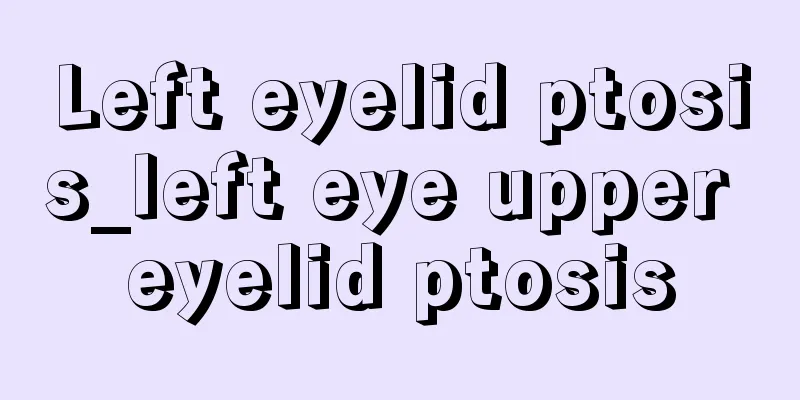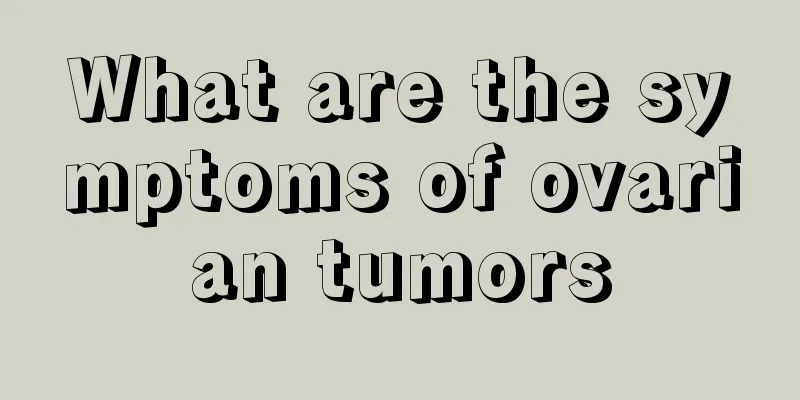Left eyelid ptosis_left eye upper eyelid ptosis

|
As people age, their skin begins to sag, especially the skin on their face becomes looser and looser, making people look particularly old. So what should you do if your left eyelid ptosis or left upper eyelid ptosis occurs? Nowadays, plastic surgery is a very common method of improvement, especially micro-plastic surgery, which can effectively improve the condition of ptosis. Moreover, this operation is less painful and has a quick recovery. Causes of ptosis Ptosis refers to the inability of the upper eyelid to be fully lifted when the patient looks straight ahead due to weakened or lost function of the upper eyelid levator muscle, resulting in the eyelid edge covering part or all of the pupil. The patient needs to rely on excessive contraction of the frontalis muscle and head-up posture to expand his field of vision, forming a special facial appearance and posture, deepening forehead wrinkles, raising eyebrows, and even deforming the neck muscles and cervical vertebrae. It not only affects the patient's vision, but also damages his appearance. Ptosis can be divided into two categories: congenital and acquired, but the causes can be divided into the following points: 1. The lifting function of the levator palpebrae superioris is reduced. 2. The motor nerve function that innervates the levator palpebrae superioris muscle is impaired. 3. Relaxation of the levator palpebrae superioris aponeurosis. Introduction to Ptosis Correction Surgery Ptosis can be divided into three degrees: mild refers to the upper eyelid on the affected side moving down 2mm or less, or the upper eyelid covers the upper 1/3 of the pupil; moderate refers to the upper eyelid on the affected side moving down about 3mm, or the upper eyelid covers 1/2 of the pupil; severe refers to the upper eyelid on the affected side moving down 4mm or more, or the upper eyelid covers more than 1/2 of the pupil. Ptosis correction surgery refers to the use of surgery to correct the levator palpebrae superioris muscles and the nerves they control that cannot function normally to varying degrees, in order to restore the function of lifting the upper eyelid and correct the drooping upper eyelid. Ptosis Correction Surgery (I) Correction of levator palpebrae superioris tendon plication 1. Tags: surgery 2. Technical Principle This operation uses surgical methods to incise and separate the levator palpebrae superioris aponeurosis, and folds and sutures the aponeurosis according to the height to which the levator palpebrae superioris muscle needs to be lifted, in order to achieve the purpose of correcting ptosis. 3. Suitable groups and taboo groups 1) Suitable for people: Suitable for patients with mild or good ptosis. The folding length is generally controlled within 10mm. 2) People who should not eat ① Patients with bleeding tendency and hypertension, as well as active and progressive diseases of important organs such as heart, lung, liver, and kidney. ② People who have infectious diseases or other physical inflammation and cannot undergo ptosis correction. ③ People with scar-prone constitution. ④ Women during menstruation or pregnancy. ⑤ People with mental illness or various psychological disorders, as well as those whose family members strongly oppose. 4. Cost: 2,000-8,000 yuan 5. Technical methods ① Incision design: Draw the incision line at the fold 6-7mm away from the upper eyelid margin. ② Anesthesia: Local infiltration anesthesia for adults and endotracheal intubation inhalation anesthesia for children. ③ Incision: According to the designed incision, separate and remove part of the orbicularis oculi muscle and connective tissue before the tarsal plate to expose the upper edge of the tarsal plate. ④ Separation and cutting: Use the retractor to pull the skin upward to separate the levator palpebrae superioris aponeurosis; decide whether to cut the medial and lateral crus of the levator palpebrae superioris tendon longitudinally according to the required separation length. ⑤ Fold and suture the aponeurosis with absorbable sutures. ⑥ Tie a knot to fix: Lift the upper eyelid to a desired height and tie a knot to fix. ⑦ Suture the skin and apply pressure bandage. 6. Risks and complications ① Insufficient correction: caused by insufficient shortening of the levator palpebrae superioris muscle fold or too loose suture ligation; corrective surgery can be performed 3-6 months after the operation. ② Overcorrection: caused by excessive folding of the levator palpebrae superioris muscle. Mild cases generally do not require treatment and will gradually improve after 2 weeks. In severe cases, the fixation sutures must be removed as soon as possible, the upper eyelid must be massaged downward vigorously, or another surgery may be performed. ③ Exposure keratitis: To prevent complications, you can follow the doctor's advice to apply artificial tears during the day and eye ointment before going to bed within 2 months after surgery. If the condition is severe, seek medical help immediately. ④ Entropion and trichiasis: may be caused by improper fixation point after correction; keep in touch with the doctor in time to detect and treat as early as possible. ⑤ The curvature of the eyelid margin is not ideal: contact your doctor as soon as possible after discovery. ⑥ Supraorbital neuralgia: Generally no special treatment is required, and analgesics and vitamin B1 can be taken for symptomatic treatment. ⑦ Infection: If infection occurs, go to the hospital immediately for further examination. 7. Treatment duration and recovery time Apply eye drops every day after surgery, remove the pressure bandage and change the dressing after 48 hours, and remove the stitches 5-7 days after surgery. 8. Notes 1) Precautions before surgery ① Do not take medications containing aspirin within two weeks before surgery, as aspirin can reduce platelet coagulation function; ② Patients with hypertension and diabetes should tell their doctors their conditions in detail during the initial visit so that the attending doctor can confirm the surgical plan; ③ Before the operation, make sure you are in good health and have no infectious diseases or other inflammations; ④ Do not wear makeup before surgery; ⑤ Women should avoid the menstrual period. 2) Postoperative precautions ① During the 3-5 days after surgery, some irritating foods, such as peppers, onions, garlic, ginger and seafood, should not be consumed; ② Try to avoid getting the surgical site wet within 7 days after surgery; ③ Ensure the cleanliness of the surgical site; ④ Strictly follow the doctor’s instructions for medication and follow-up visits. |
<<: What does the wrist joint consist of?
>>: Causes of sagging eye bags
Recommend
Will the hair grow longer after shaving?
Generally speaking, sweat hair will not grow long...
How to use rose essential oil
After rose essential oil was called essential oil...
Yellow medicine is banned
Mercurochrome is a preservative used for steriliz...
4 stages of breast cancer development
The development of breast cancer cells in the hum...
My stomach is hard at 8 and a half months of pregnancy?
When a woman is more than eight months pregnant, ...
Lemon stain removal
Lemon is a common fruit in our lives. It tastes s...
What should I do if my ears hurt when water gets into them while swimming?
When we are swimming or taking a bath, we often e...
Which department should I go to for teeth cleaning
If you want to have your teeth cleaned, you shoul...
Is there any cure for brainstem hemorrhage
The human brain is one of the most important comp...
What are the dangers of reading while eating
Many people like to read or watch TV while eating...
Can chromosomes be treated?
Chromosomes are inherited from the parents' g...
Prostate cancer diagnostic criteria
Because the onset of prostate cancer is divided i...
How to care for patients with rectal cancer in the late stage
In the nursing measures for patients with advance...
What are the three types of pain in the early stage of lung cancer
There are no clear clinical signs of the three pa...
What are the hazards of smog weather and preventive measures
Haze weather is a weather condition that has freq...









